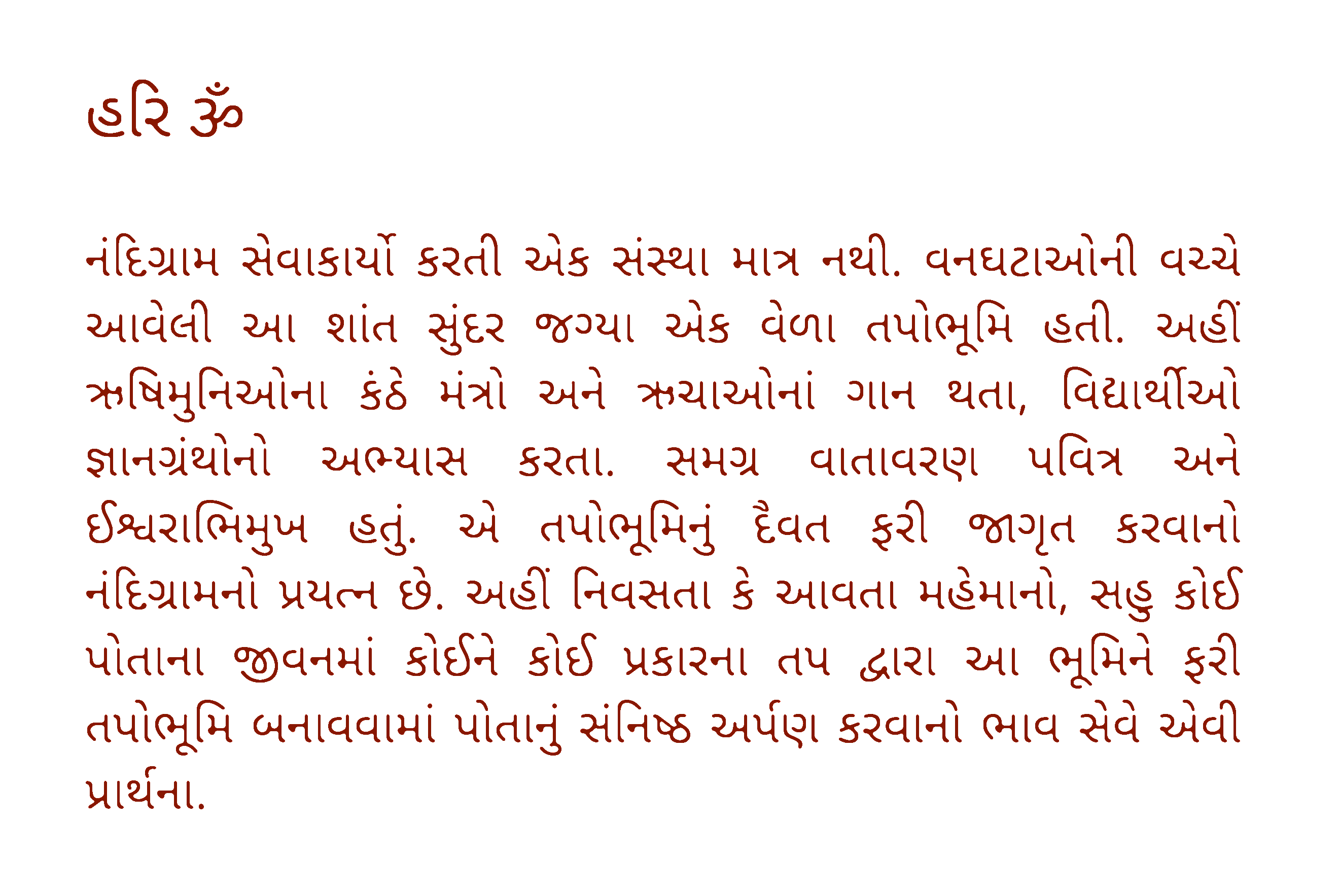-
 NANDIGRAM DARSHAN
NANDIGRAM DARSHAN -
 THE BREEZETHE SUNLIGHTTHE BIRDSONGS
THE BREEZETHE SUNLIGHTTHE BIRDSONGS -
 THE NATURE MARVELSWITH EASE
THE NATURE MARVELSWITH EASE

WHY NANDIGRAM
The name Nandigram has a deep meaning. King Bharat of Ramayan, instead of staying in the palace preferred to live a simple life in a small hut at Nandigram village located on the outskirts of Ayodhya after vangaman (exile) of Lord Ram. He placed the sacred paduka of Shree Ram on the royal throne and ruled the kingdom on his behalf awaiting his return. In the same manner, the pioneers of Nandigram left the city-life of Mumbai and selected to reside at Vankal – a small village of Valsad District, Gujarat. They used to advise us to perform all the activities without the sense of doership. According to them, the act of servicing should be based upon compassion and selflessness without any expectation or intention even to make the recipient feel inferior. Both of them emphasized to live a simple life with continuous spiritual growth; so that Divinity can be manifested within.
in 1985 with few like-minded people under Divine Guidance, our Founders firmly believed that the inner purification and social obligations are the two wings of the Soul and should go hand in hand. Spiritual practices without social concern is lop-sided. Likewise, services without spirituality is ego-boosting, seeking validation for generosity.
SEO Friendly
Sed ut perspiciatis unde omnis iste nat eror acus antium que
Google Fonts
Sed ut perspiciatis unde omnis iste nat eror acus antium que
Tons of Shortcodes
Sed ut perspiciatis unde omnis iste nat eror acus antium que
1500+ Icons
Sed ut perspiciatis unde omnis iste nat eror acus antium que
DAVE

KAPADIA
